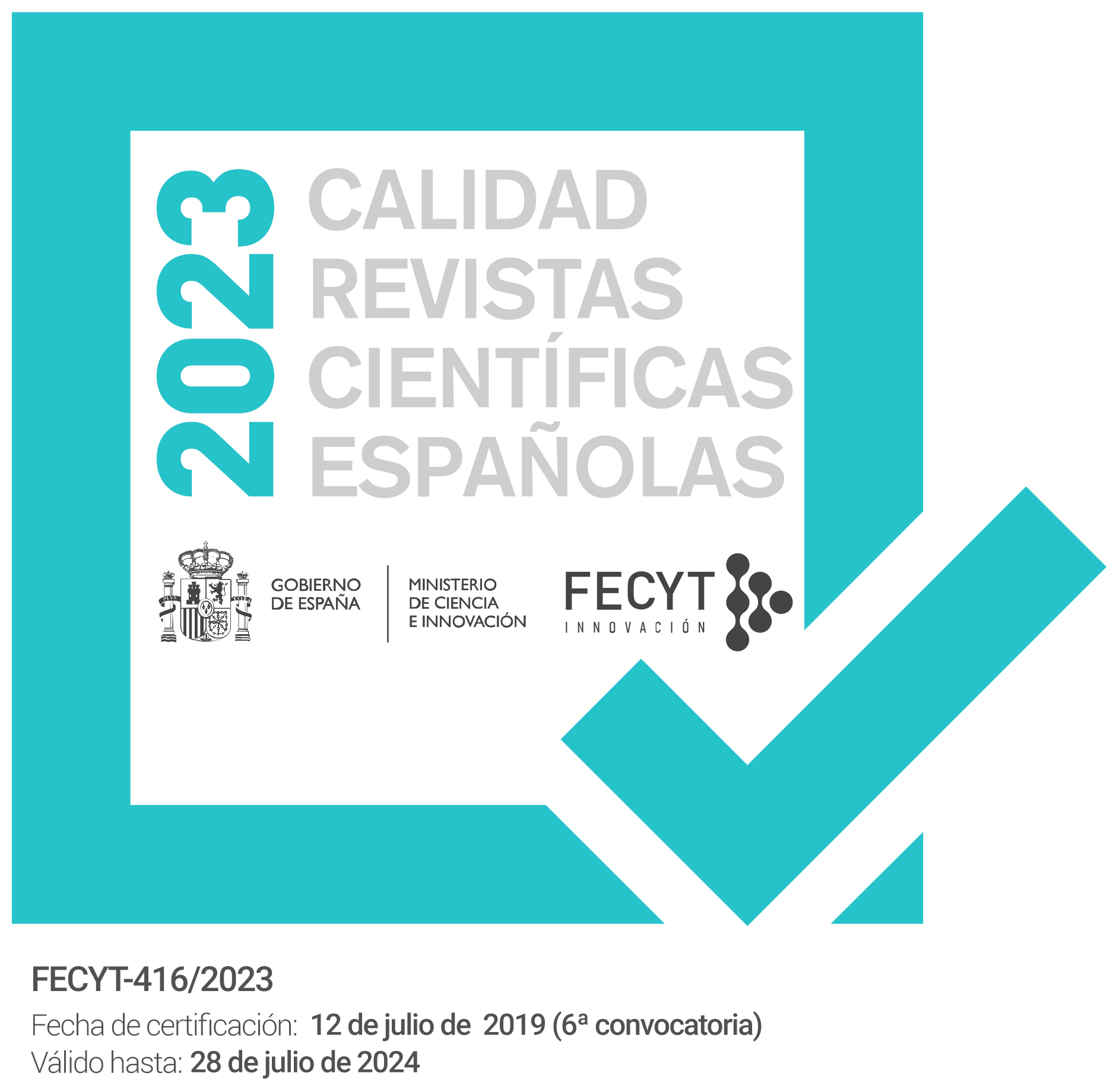An Informational Challenge: HISMEDI, Spanish Transition and Multimedia History
DOI:
https://doi.org/10.51349/veg.2022.1.05Keywords:
Spain, Transition, Multimedia History, Digital Sources, MemoryAbstract
This article looks at new ways of putting the past on display, specifically the digital sources pertaining to the Spanish transition that constitute the new digital, historical and journalistic public sphere. The article describes and analyses the database resulting from the HISMEDI: Political Transition to Democracy project, with the aim of distinguishing and quantifying the different digital sources that are part of its collections. Currently, resources can be divided into: blogs, documentaries on video platforms such as YouTube or Vimeo, media features, websites, databases, social networks such as Twitter or Facebook, educational portals, bulletins and newsletters, etc.
Downloads
References
Carratalá, A. (2015): El tratamiento de la Monarquía española en las viñetas de los medios digitales. Revista Dígitos, 1: 127-154. http://dx.doi.org/10.7203/rd.v0i1.7
Cauvin, T. (2018): The Rise of Public History: An International Perspective, Historia Crítica, 68: 3-26 https://doi.org/10.7440/histcrit68.2018.01
Cuesta, J. (2007): Las capas de la memoria: contemporaneidad, sucesión y transmisión generacionales en España (1931-2006), Hispania Nova, 7.
Cohe n, D. (2010): Is Google Good for History?. Dan Cohen’s Digital Humanities Blog. www.dancohen.org/2010/01/07/is-google-good-for-history
Cohe n, D.; Rosenzweig, R. (2005): Digital history. A guide to gathering, preserving, and presenting the past on the web. Center for History and New Media. http://chnm.gmu.edu/digitalhistory
Egido, Á.; Eiroa, M. (2017): Redes sociales, historia y memoria digital de la represión de mujeres en el franquismo, Revista de Historiografía, 27 (2): 341-361. https://doi.org/10.20318/revhisto.2017.3977
Eiroa, M. (2020): Revistas y Newsletters digitales de Memoria: una comunicación en Red sobre la actualidad del pasado, Estudios sobre el Mensaje Periodístico, 26 (1): 103-112. https://dx.doi.org/10.5209/esmp.67290.
Eiroa, M. (2019): Primary sources for a digital-born history: the Hispanic blogosphere on the Spanish Civil War and Franco’s regime, Culture & History Digital Journal, 7 (2). https://doi.org/10.3989/chdj.2018.016
Eiroa, M. (2018): El pasado en el presente: el conocimiento historiográfico en las fuentes digitales, Ayer, 110 (2): 83-109.
Fickers, A. (2012): Towards a New Digital Historicism? Doing History In The Age Of Abundance, Journal of European Television History and Culture, 1 (1): 19-26. http://doi.org/10.18146/2213-0969.2012.jethc004
Gallini, S.; Noiret, S. (2011): La historia digital en la era del Web 2.0, Historia digital. Historia Crítica, 43: 16-37.
Lemus, E. (2008): Los Estados Unidos y la imagen de la situación española en vísperas de la Transición política, Historia del presente, 11: 97-110.
Magallón-Rosa, R. (2017): Datos abiertos y acceso a la información pública en la reconstrucción de la historia digital, Historia y Comunicación Social 22 (2): 297-308. https://doi.org/10.5209/HICS.57845
Magallón-Rosa, R. (2008): La historia multimedia. La transformación de la memoria evenemencial, Historia Actual Online, 17: 169-174.
Noiret, S. (2018): Trabajar con el pasado en internet: la historia pública digital y las narraciones de las redes sociales, Ayer, 110: 111-140.
Pons, A. (2020): De la historia local a la historia pública: algún defecto y ciertas virtudes, Hispania Nova, 1 extraordinario: 52-80.
Pons, A. (2018): El pasado fue analógico, el futuro es digital. Nuevas formas de escritura histórica, Ayer, 110: 19-50.
Pons, A. (2006): La historia maleable. A propósito de internet», Hispania, 66 (222): 109-130. https://doi.org/10.3989/hispania.2006.v66.i222.4
Rodríguez Mateos, D.; Hernández-Pérez, T. (2015) Televisión social en series de ficción y nuevos roles del documentalista audiovisual: el caso de “El Ministerio del Tiempo”, Index.comunicación: Revista científica en el ámbito de la Comunicación Aplicada, 5: 95-120.
Zugasti, R. (2005): La legitimidad franquista de la Monarquía de Juan Carlos I: un ejercicio de amnesia periodística durante la transición española, Comunicación y sociedad, 18 (2): 141-168.
Downloads
Published
Issue
Section
License
Copyright (c) 2022 Raúl Magallón Rosa

This work is licensed under a Creative Commons Attribution-NonCommercial-NoDerivatives 4.0 International License.
The articles are open access distributed under the terms of the Creative Commons Attribution-NonCommercial-NoDerivatives (CC BY-NC-ND) Spain 4.0 license. Authors who publish in this journal agree with the following terms:
a) Authors retain the copyright and guarantee the journal the right to be the first publication of the work as well as licensed under a Creative Commons Attribution License that allows others to share the work with a recognition of the authorship of the work and the Initial publication in this magazine.
b) Authors may separately establish additional agreements for the non-exclusive distribution of the version of the work published in the journal (for example, place it in an institutional repository or publish it in a book), with recognition of its initial publication in this magazine.
c) Authors are allowed and encouraged to disseminate their work electronically (for example, in institutional repositories or on their own website) before and during the submission process, as it may result in productive exchanges, as well as a earliest and largest citation of published works (See The Effect of Open Access).



